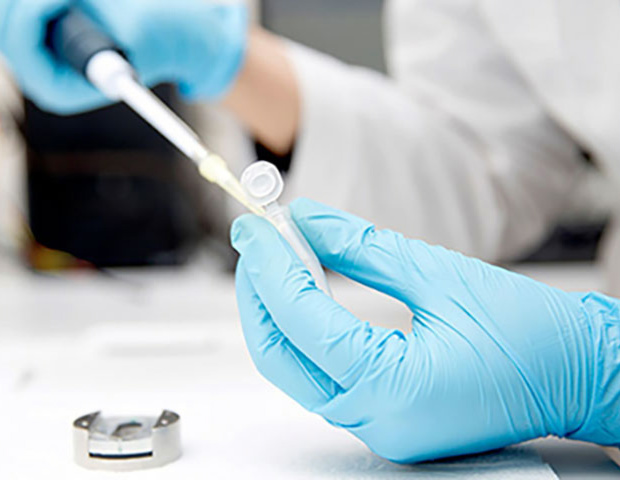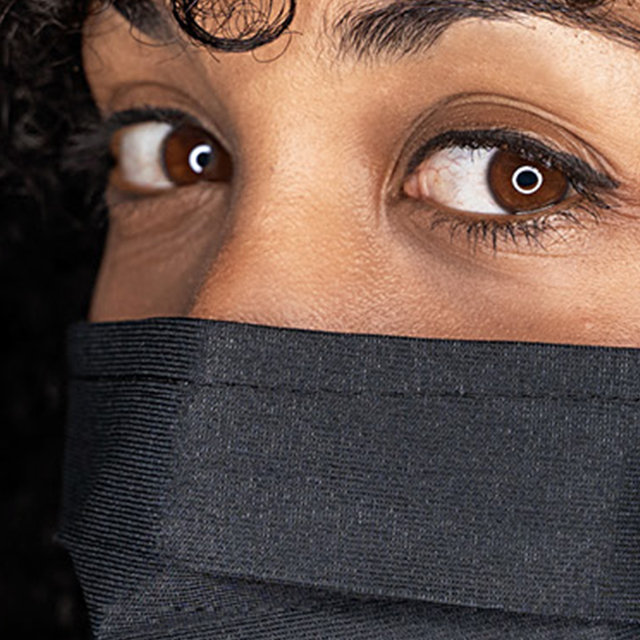A lift-the-flap book for the waiting room. Check.
Masks, sanitizer. Check, check.
Overnight backpack (I hope it’s not needed). Check.
Earbuds for podcasts to occupy my mind. Check.
I review this list as I dress my 17-month-old in a short-sleeved blue and white dress. It is 6 a.m. on a mild September morning. I am ready to drive her to The Johns Hopkins Hospital to have surgery that was delayed due to the coronavirus pandemic. As a writer and editor for the Johns Hopkins Health System, I have interviewed experts and written about the extensive safety precautions that are part of the organization’s response to the pandemic.
I am confident that we will be safe. However, I am uncertain about what lies ahead.
Uncovering a Diagnosis
When our daughter was several weeks old, my husband and I realized that she was having trouble breathing. After she caught a cold from our 2-year-old son, her congestion never cleared. We tried a cool mist humidifier, menthol ointment for babies and positioning her upright. We even tried using a product that aspirates mucus from a baby’s nose, but we could never get it to work on our infant’s right nostril.
On a normal night, she was a noisy breather and a restless sleeper. With a cold, however, these symptoms intensified terribly. Ultimately, we found she was most comfortable sitting in a baby bouncer with her head propped up and tilted back with rolled-up baby blankets under her neck.
My husband suspected our daughter’s nostril had a blockage after he found medical information on the internet describing a rare congenital condition that affects 1 in 7,000 babies. Unable to see anything in our infant’s nose, our pediatrician referred us to Johns Hopkins Pediatric Otolaryngology—Head and Neck Surgery.
During an appointment with David Tunkel, a pediatric otolaryngologist and director of Johns Hopkins Pediatric Otolaryngology, and Melinda “Nina” DeSell, a pediatric otolaryngology nurse practitioner at Johns Hopkins Children’s Center, our then 8-week-old underwent a fiberoptic laryngoscopy to look inside her nose and sinus. I watched the images on a screen in the exam room as a tiny scope the width of fishing line was inserted into her right nostril — until it stopped at tissue and bone.
The specialists confirmed my husband’s suspicion. Our daughter had a narrowing in the nasal cavity that usually separates in the first trimester of pregnancy. Called choanal atresia, it can be an isolated abnormality or appear as one of many features of a genetic condition called CHARGE syndrome that features coloboma (an eye abnormality), heart defects, growth retardation, genital abnormalities and ear abnormalities as well as choanal atresia.
Although I was happy to know the reason for her discomfort, it gave me more to worry about. When we left the appointment, DeSell said she was sorry. On our way home, our pediatrician called because she had already received the diagnosis. Fortunately, an initial evaluation with the Johns Hopkins Department of Genetic Medicine’s Pediatric and Adult Genetics Clinic suggested our baby did not have CHARGE syndrome.
Tunkel said surgery to remove some skin and bone would allow air through the right nostril. However, he recommended we wait until she got a bit bigger, so we planned for late spring of 2020, after the cold and flu season. When the time came to get a CT scan prior to surgery, I was fearful about exposure to COVID-19 and decided the surgery could wait.
A couple months later — in late July of 2020 — I had a video visit with Tunkel. He said if I was considering having the surgery now, I could have peace of mind knowing that patients with COVID-19 are in a separate part of the hospital. He also confirmed that our daughter, now 15 months old, was not exhibiting any features of CHARGE syndrome.

Coronavirus (COVID-19) Email Alerts
Sign up to receive coronavirus (COVID-19) email updates from Johns Hopkins Medicine.
A Safe Path to Surgery
As I push my daughter in a stroller through the same hospital area where she had her first appointment, it looks mostly the same, although there are far fewer people in the halls and all are wearing masks. Circles 6 feet apart on the floor instruct visitors where to stand while waiting in line. Signs inside the elevators and paper coverings on some of the chairs also encourage physical distancing. (I smile when I see these safety reminders because I remember when my JHM graphic design colleagues started creating them.)
When we are called back to the pediatric acute care unit, I immediately spot Tunkel. He’s wearing a mask, hair cover and face shield, but I recognize his lighthearted eyes. My daughter sees him too, and starts toddling away in the opposite direction. Everyone laughs, including me, as one of the nurses catches her.
The surgeon shows me the CT scan that she had the week before — confirming in black and white what he is going to do today. There is a narrowing in the space of the sinus on her right side that eventually closes. This is what has caused her and our family such discomfort. This is what the surgeon will repair.
After my toddler receives medication to relax, I dress her in a small pink hospital gown with ties on the back. A resident anesthesiologist carries her back to the operating room. When I speak to the attending pediatric anesthesiologist, I ask him to repeat himself because he sounds muffled under his mask.
I know she is in the best hands possible, but I must distract myself from worry. The surgery is expected to take about three hours, so I walk to the cafeteria to get a sticky bun and call my husband, who is at home with our son. I spend the remaining time listening to a podcast on money management to keep my mind busy.
After the surgery, she sleeps soundly while I wipe some blood from her nose. I think she looks a little beat-up around her nose and mouth, but I know it’s a sign of the new opening. If she wakes up, eats and is doing well, we can go home this evening. A nurse asks me what food we would like and orders it.
I hold my little girl in my lap for a long time before she wakes enough to eat. It’s a day she will never remember — and one I will never forget.
Tunkel comes by to say his patient is doing well enough to go home, and I feel overwhelming gratitude. Thanks to him and the rest of the team at Johns Hopkins, we have accomplished so much.
A safe visit to the hospital. Check!
A successful surgery. Check!
Medical assurance that our child can start preschool in nine days. Check!
Confidence that my husband and I made the right decision for our daughter. Check!


